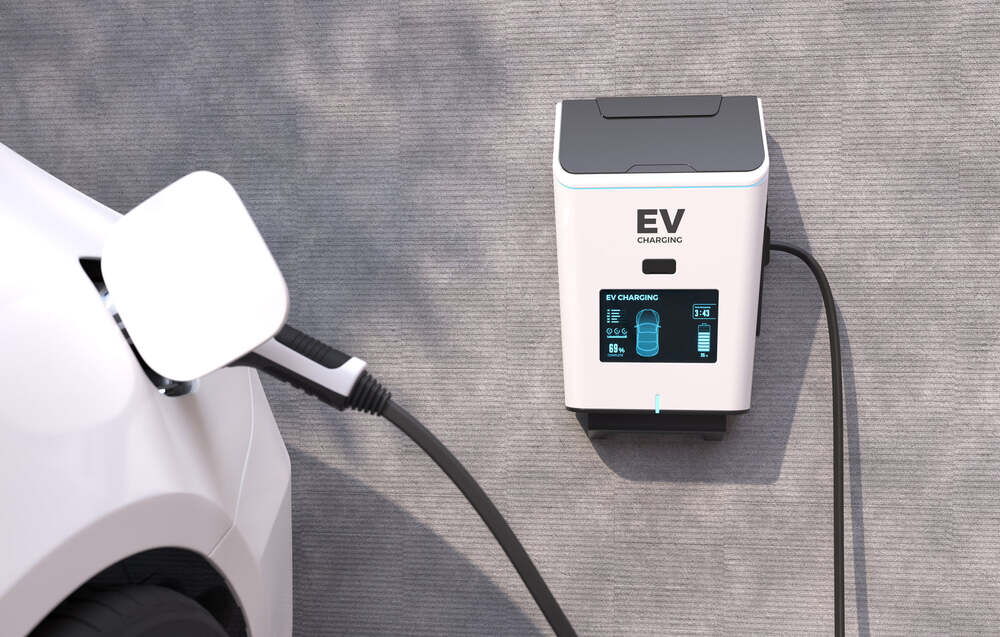As electric vehicles (EVs) become increasingly popular, understanding the distinctions between Level 2 AC charging and DC fast charging is essential for both EV owners and prospective buyers. These two charging methods serve different purposes, and choosing the right one can impact your EV ownership experience. In this article, we’ll explore the differences between Level 2 AC and DC fast charging, their respective advantages, and ideal use cases.

Level 2 AC EV charging operates using a 240-volt power source and delivers output power ranging from 6 to 19 kilowatts. This makes it a practical option for everyday charging needs, especially at home or in workplaces. Let’s dive into its key attributes.
Level 2 chargers provide a charging speed of approximately 40-50 kilometers of range per hour (RPH), making them suitable for overnight charging or extended parking periods. With a modestly sized battery, an EV can be fully charged within 4 to 8 hours, depending on the vehicle and battery capacity. This slow yet steady approach to charging ensures the battery remains healthy over time.
Level 2 chargers are more affordable than DC fast chargers, both in terms of equipment and installation. For residential use, installing a Level 2 charger typically costs between $500 and $2,000, depending on the model and existing electrical infrastructure. Many governments also offer rebates or incentives to offset installation costs, further enhancing affordability.
Level 2 chargers are a favorite choice for residential use, allowing owners to conveniently charge their vehicles overnight.
Employers can install Level 2 chargers in parking lots to provide charging options for employees, promoting sustainable commuting.
Charging stations in shopping malls, restaurants, and recreational centers allow EV drivers to top off their batteries while running errands. These chargers can provide 35 to 40 miles of range per hour, enough for local commutes or additional errands.
DC fast charging, often referred to as Level 3 charging, uses 400- or 800-volt power sources to deliver rapid charging at speeds between 50 and 350 kilowatts. It’s designed for situations where time is of the essence, such as road trips or fleet operations.
DC fast chargers are significantly faster than Level 2 chargers, capable of delivering up to 300 kilometers of range in just 30 minutes. For most EVs, a DC fast charger can replenish the battery from 10% to 80% within 20-30 minutes, depending on the vehicle’s charging capability and the charger’s output.
While DC fast chargers are a marvel of technology, they come at a higher cost. Installing a DC fast charger can range from $10,000 to $50,000, making it impractical for residential use. Additionally, the charging costs per session are higher due to the increased energy output. However, these chargers are often found in public spaces and along highways, making them accessible for travelers.
Long-distance travel becomes hassle-free with DC fast chargers, which allow drivers to recharge quickly during breaks.
For commercial EV fleets, such as delivery vans or ride-hailing vehicles, DC fast chargers ensure quick turnarounds and continuous operations.
If you’re in a hurry and need a quick charge, DC fast charging is the fastest solution available.
|
Factor |
Level 2 AC |
DC Fast Charging |
|
Speed |
Slower (40-50 km/hour) |
Much faster (up to 300 km in 30 min) |
|
Cost |
Less expensive |
More expensive |
|
Availability |
Widespread in private spaces |
Common in public spaces |
|
Typical Locations |
Homes, workplaces |
Highways, urban hubs |
Level 2 chargers are ideal for scenarios where charging time is not a critical factor. If you’re parking your car for several hours, such as at home or work, Level 2 charging is sufficient to replenish your battery.
For drivers who cover 30 to 60 kilometers daily, a Level 2 charger ensures the battery is ready for use each morning.
While you shop or dine, Level 2 chargers can add enough range to complete your tasks without requiring a lengthy wait.
For residential or small business installations, the lower cost of Level 2 chargers makes them a cost-effective solution.
DC fast chargers excel in scenarios where time is of the essence. These chargers are a perfect match for drivers covering long distances or operating under tight schedules.
When you’re on a road trip, the ability to charge quickly and get back on the road is invaluable.
Commercial fleets benefit from the rapid turnaround provided by DC fast chargers, ensuring minimal downtime.
If your battery is low and you need to travel immediately, a DC fast charger can provide the boost you need within minutes.
The EV charging landscape is evolving rapidly, with technological advancements shaping the future of both Level 2 and DC fast charging.
Integration with smart grids will allow users to optimize charging schedules based on energy demand and cost.
As battery technology improves, charging speeds for both Level 2 and DC fast charging are expected to increase.
Governments and private sectors are investing in expanding charging infrastructure, ensuring EV drivers have access to chargers wherever they go.
Solar-powered chargers and renewable energy integration are becoming more prevalent, reducing the carbon footprint of EV charging.
Choosing between Level 2 AC and DC fast charging depends on your specific needs, driving habits, and budget. Level 2 chargers are excellent for everyday use, providing an affordable and convenient way to charge at home or work. In contrast, DC fast chargers are indispensable for long trips, commercial fleets, and emergency situations.
As EV adoption grows, having a clear understanding of these charging options will empower drivers to make informed decisions, ensuring a seamless and efficient EV ownership experience. Whether you prioritize cost, speed, or availability, there’s a charging solution to fit your lifestyle and needs.